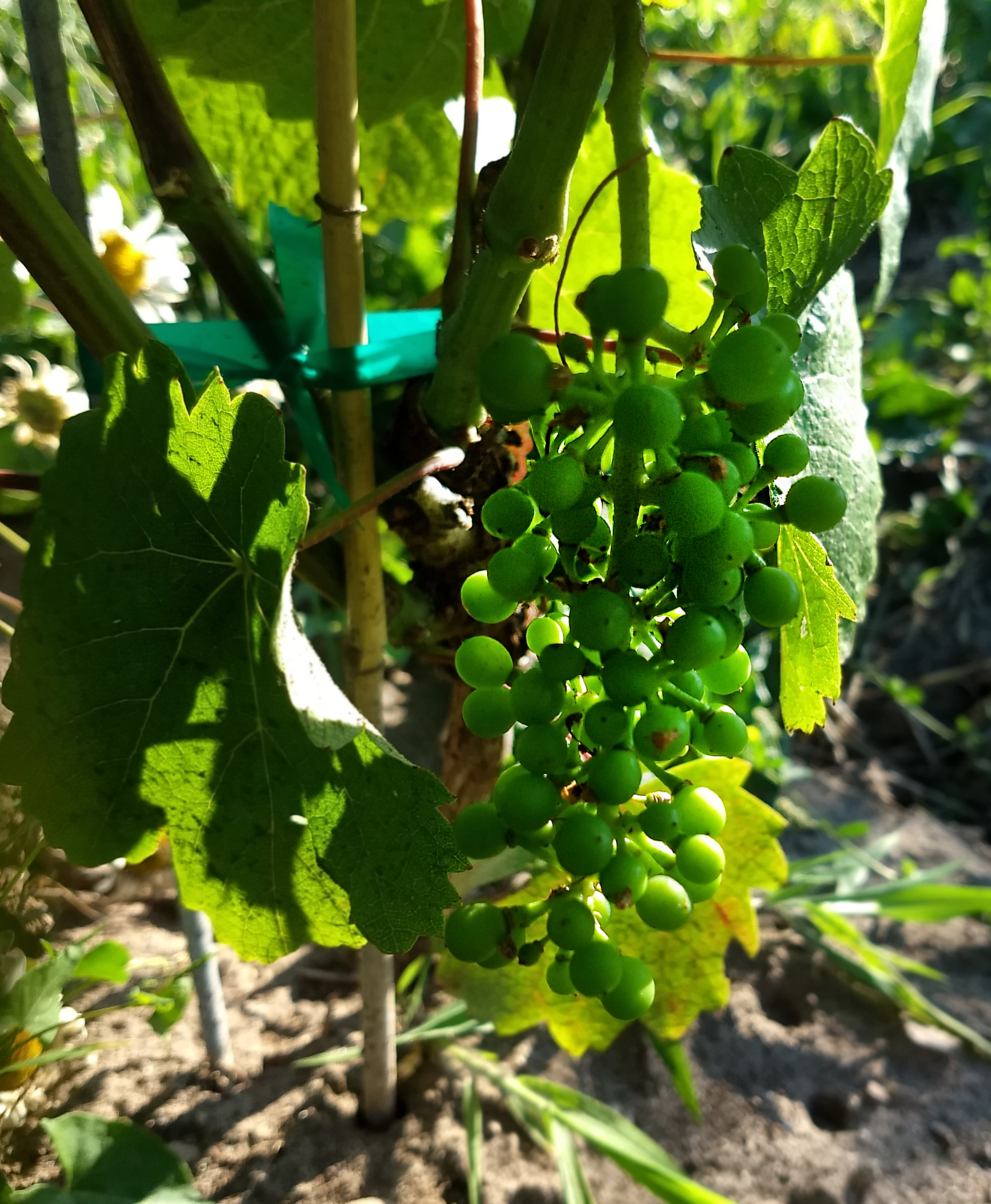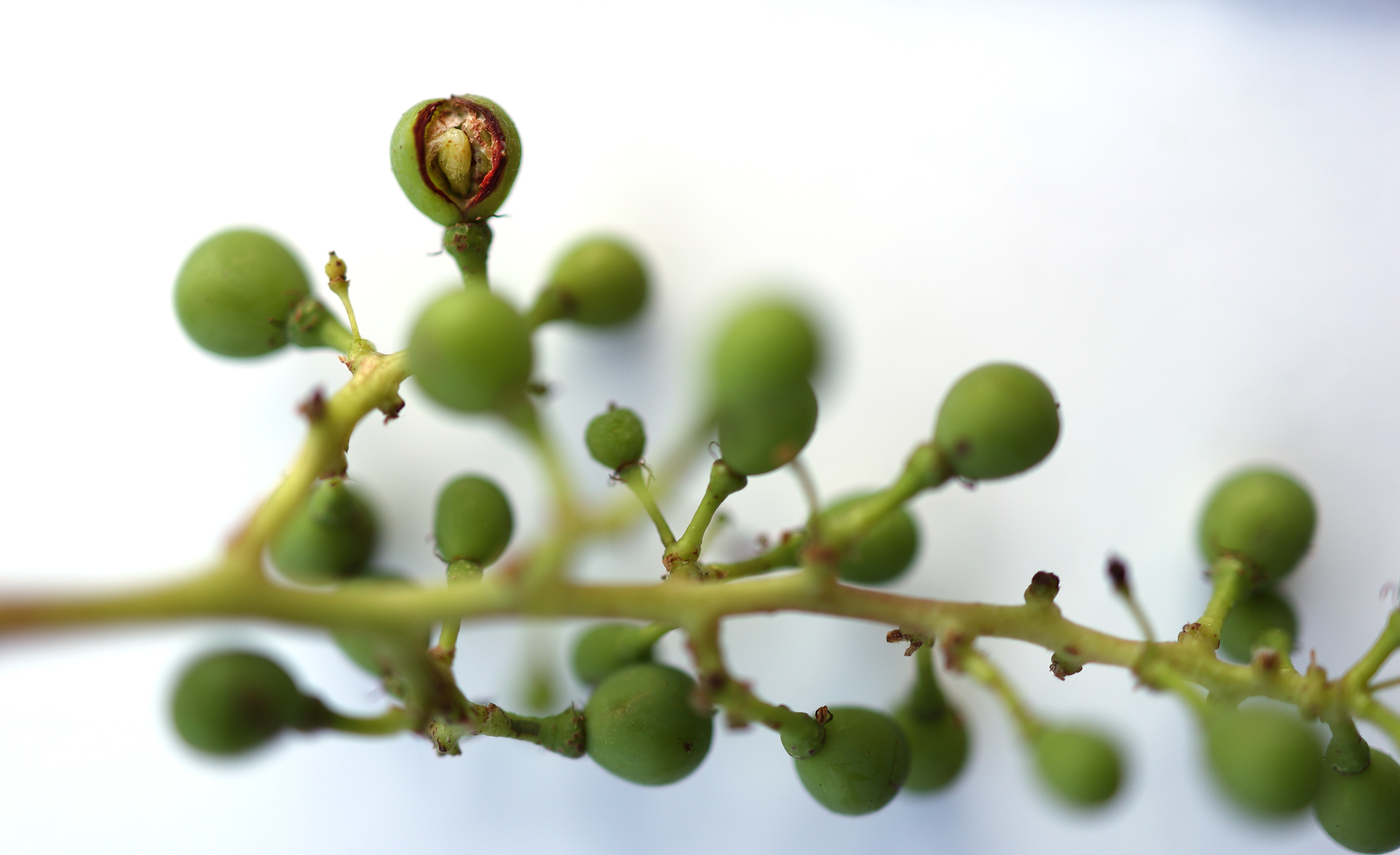Michigan grape scouting report – July 20, 2022
The majority of Michigan's grape growing regions are in the mild grape growing season.

Weather
In northwest Michigan, Thursday will be sunny, with a high near 85. The west wind will be 10 to 15 mph, and Thursday night will be mostly clear, with a low of around 64. Friday will be sunny, with a high near 86 and a chance of showers at night with a low around 65. The weekend will be mostly sunny with a high of near 85 and a chance of showers at night with a low of around 63.
In southwest Michigan, Thursday will be sunny, with a high near 85. Showers and thunderstorms are possible before 2 a.m. on Thursday, and it will be partly cloudy with a low around 69. Friday will be partly cloudy with a high near 85 degrees and a 30% chance of showers and thunderstorms after 2 a.m., with a low around 69 degrees expected.
Saturday has a chance of showers, with thunderstorms also possible after 2 p.m. Mostly sunny, with a high near 85. The chance of precipitation is 30%. There is a 50% chance of showers and thunderstorms on Saturday night. Mostly cloudy, with a low around 69. Sunday will have a 50% chance of showers and thunderstorms. Sunday afternoon will be cloudy with a high near 81 degrees, and Sunday night will be cloudy with a 40% chance of showers and thunderstorms. Mostly cloudy, with a low around 68.
In southeast Michigan, Thursday will be sunny, with a high near 89. Winds from the west northwest at 11 mph, with gusts up to 23 mph. Thursday night will be mostly clear, with a low around 70. Friday will be sunny, with a high near 90. Friday night will be partly cloudy, with a low around 70. Saturday will have a chance of showers and thunderstorms after 2 p.m. Mostly sunny, with a high near 88. Saturday night will be mostly cloudy with a low around 71 degrees Fahrenheit and a chance of showers and thunderstorms.
Sunday will be partly sunny, with a high near 84 and it will have a chance of showers and thunderstorms. Sunday night will have a chance of showers and thunderstorms. Mostly cloudy, with a low around 68.
Last week was a typical summer week in Michigan. On average, Michigan AVAs accumulated 132.1 Growing degree days (GDD), 148 GDD less than the previous week. The southeast AVAs were the warmest regions on average and picked up 143 GDD, while southeast Michigan picked up 139 GDD. The tip of the mitt AVAs in Michigan was the coolest region, with an average GDD of 125.
|
Southwest Michigan GDD Summary from March 1 through July 18, 2022 |
|||
|
Enviroweather station |
Current GDD 50 F |
GDD 50 F last week |
Collected the past week |
|
Benton Harbor (SWMREC) |
1482 |
1349 |
133 |
|
Fennville |
1335 |
1200 |
135 |
|
Lawton |
1487 |
1345 |
142 |
|
SW Average |
1459 |
1320 |
139 |
|
Romeo |
1336 |
1196 |
140 |
|
SE Average |
1400 |
1257 |
143 |
|
Old Mission |
1042 |
926 |
116 |
|
Petoskey |
1013 |
888 |
125 |
|
Traverse City (NWMHRS) |
1101 |
976 |
125 |
|
NW Average |
1037 |
922.5 |
114.5 |
Vine growth
In the southwest AVAs, many vinifera wine grape cultivars are at buckshot berry. Most hybrid wine grape varieties and juice are nearing berry touch to bunch closure.
In the northwest AVAs, wine grape cultivars are at buckshot berry (Photo 1). In the Tip of the Mitt, most hybrid cultivars are close to bunch closure and vinifera cultivars are approaching pea size (Photo 2).
See this chart for grape growth stages.

Horticulture
Hedging is going to begin in vineyards in southwest Michigan soon. The main objectives of hedging are to cut back on extra primary and lateral shoot growth on the top and sides of the canopy to avoid shadowing and shoot entanglement between vine rows and to make the vineyard more accessible to workers and tractors. Hedging can further encourage growth by promoting lateral shoot growth in robust vines, even though it indirectly reduces the canopy by removing primary and lateral shoots. Hedging is best done in the early to mid-summer.
Hedging is typically done between fruit set and véraison, when primary and lateral shoots begin to bend (at a 45-degree angle), and it is critical to keep leaves, fruit, and developing buds exposed to enough light in dense canopies with excessive vegetative growth. Hedging too early in the growing season should be avoided because it can lead to increased lateral growth and canopy density.
Diseases
This week will be relatively wet in southwest grape-growing areas. Grape growers need to be prepared for higher disease pressure these days. Currently, in the southwest, the main concerns are phomopsis, black rot, downy and powdery mildews. In wine grapes, materials to control botrytis should be included in the sprays.
As the northwest had a pretty dry week, disease pressure is still low, while in the Tip of the Mitt region, disease pressure continues to increase and phomopsis and black rot are the main concerns.
At this time of year, the disease focus is on phomopsis, black rot, anthracnose and powdery mildew. For more information on pre bloom fungicide options and the impacts of rain on disease spread, check out this previous grape scouting report or this article on early season disease management. This week some growers have been finding sparse downy mildew and downy mildew infections on flower clusters in vineyards.
In the northwest, most grape-growing areas have been relatively dry with mild airflow and disease pressure has remained low. However, in the Tip of the Mitt AVA, in some spots, due to recent rainfall, disease pressure is increasing and black rot has been observed.
In this growing stage, you should consider choosing fungicides that control all the fruit diseases. For example, with downy mildew we are most concerned with fruit infection at this time and sprays should be timed prior to bloom and at bloom for optimal control. Downy mildew is caused by a fungal-like organism, so many site-specific systemic fungicides that target other spring diseases do not work on downy mildew. Effective fungicides for downy mildew include products in FRAC codes 4, 11, 21, 40 and 45 as well as phosphorus acid salts and some biologically based products.
Except for powdery mildew, these spring disease infections typically require rain events. It only takes 0.1 inches of rain above 50 degrees Fahrenheit to trigger a possible infection. Viticultural practices that reduce canopy wetness such as good irrigation timing, leaf removal and good weed management can reduce many of these diseases in a vineyard. Typically, DMIs (FRAC 3), captan and EBDCs (FRAC M3) are effective for phomopsis, black rot, and anthracnose.
Insects
In the southwest, grape berry moth's second generation began just over two weeks ago. The 810 GDD biofix used for grape berry moth (GBM) insecticide timing was around July 2 for most growers in the region. The 910 GDD timing for insecticide applications targeting larvae was on July 6. Grape berry moth damage was found in Van Buren County. See this article for more information on grape berry moth biofix.
From scouting in Lawton area vineyards on July 18, it appears that cover sprays from the 810/910 have effectively reduced grape berry moth damage on clusters at most farms. Some growers have been reapplying insecticides to ensure protection after the rains last week. Trap catch was an average of 43 per trap. Average 2-4% damage at sites with high pressure, with two to six berries affected on damaged clusters.
Grape berry moth egg laying has begun this week in most of the northwest Michigan grape growing regions. Growers with a history of grape berry moth infestation in their clusters should plan for a lengthy period of protection from the second generation of grape berry moth, as this pest's egg laying continues through July. Additional sprays after the biofix spray will be required in high-pressure areas to maintain coverage and keep infestations at bay.
Thrips damage have been reported from Leelanau and Grand Traverse counties (Photo 3). Thrips can scar very young berries as early as fruit set. Later, the scars can restrict berry growth, resulting in oddly shaped or scarred berries. Thrips can cause damage to shoots and leaves in the spring, especially when temperatures are cool.

Japanese beetles feeding on foliage have been reported in Leelanau, Grand Traverse and Emmet counties and the southwest AVAs.
Japanese beetles have only one generation per year, but these beetles emerge over a long period from late June through August, and they live for over 30 days. They feed on the foliage and fruit of various fruit crops grown in Michigan. Their emergence during mid-summer can also result in their presence during the harvest of some fruit crops, creating a risk of contamination.
Read here for more detail: Managing Japanese beetles in fruit crops.
Upcoming events
The Southwest Michigan Viticulture Field Day will return to the Southwest Michigan Research and Extension Center for 2022. As tradition holds, the event will be the last Wednesday of July (July 27, 2022) and will include presentations of ongoing research in southwest Michigan. The event will once again conclude with a steak dinner and local wine tasting. Registration for the Viticulture Field Day is online through the Michigan Grape Society’s website.
Register for Dirt to Glass 2022: Elevating Michigan Wine from the Ground Up. Michigan State University Extension is hosting a new conference for the Michigan grape and wine industry. Dirt to Glass 2022: Elevating Michigan Wine from the Ground Up is the first ever of its kind in Michigan and this year it will take place in Traverse City on August 25-26. This year's Dirt to Glass conference will focus on soil health, soil identification and soil fertility. Each year, the conference chooses a specific area of study based on the results of an annual educational needs assessment survey. Registration by July 10 is required.
Tile Drainage Field Day 2022. Linking Soil Health, Nutrient Management, and Water Management for Improved Water Quality. The event will be hold on Thursday, Aug 25, 2022 at 13000 Bird Lake Rd., Camden, MI 49232
Related articles
- Early season vineyard management
- Early season control of grape berry moth in Michigan vineyards for 2022
- Rose chafer management for northwest vineyards
- 2022 Fruit insecticide registration update
- Southwest Michigan fruit update – June 28, 2022
- Michigan grape scouting report – June 22, 2022
- 2022 MSU Fruit Pest Management Guide (E-154)
- Grape growth stages
- Early season vineyard disease management
- Early season vineyard management
- A Mobile Guide for Grape IPM Scouting in North Central and Eastern U.S.
- Using the MSU Enviroweather grape berry moth model in 2018
This work is supported by the Crop Protection and Pest Management Program [grant no 2021-70006-35450] from the USDA National Institute of Food and Agriculture.



 Print
Print Email
Email
